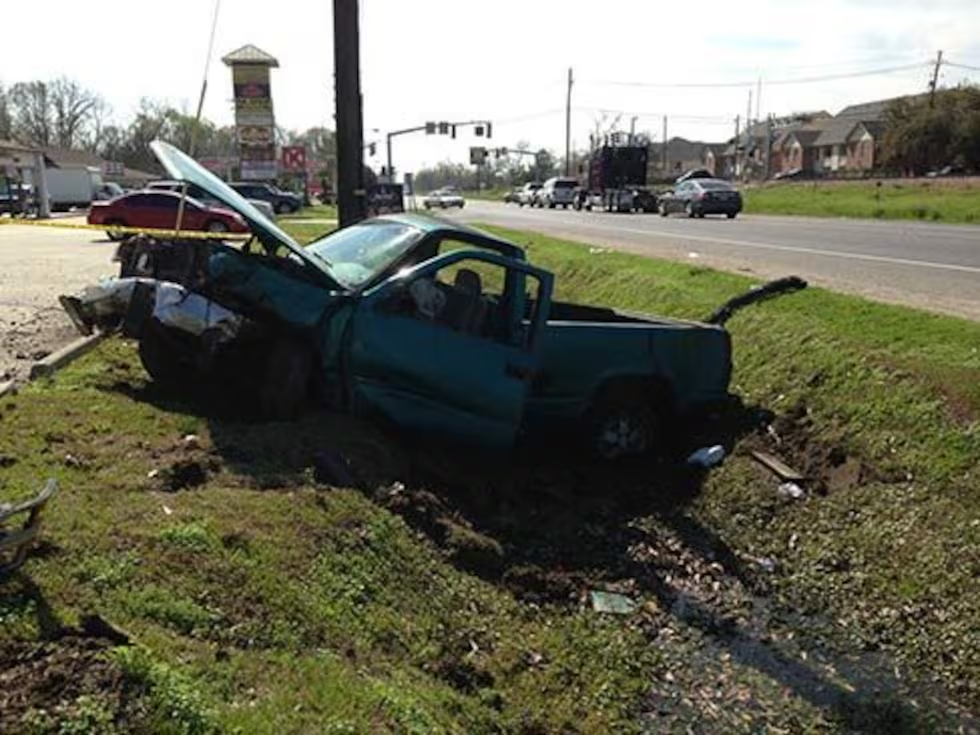In the annals of car accidents, some leave an indelible mark on society due to their profound consequences. The Guillot car accident is one such incident. This blog post will explore the various facets of the Guillot car accident, highlighting its impact on car enthusiasts, safety advocates, and legal professionals. The repercussions of this accident extend far beyond the immediate calamity, influencing automotive safety standards, sparking intense legal debates, and reshaping public perception of road safety.
Understanding the Guillot Car Accident
The Guillot car accident, a tragic event that captured national attention, involved multiple vehicles and resulted in significant casualties. The severity of the accident and the ensuing investigations brought numerous issues to light, ranging from driver behavior to vehicle safety features. Understanding the specifics of the Guillot car accident helps in grasping its far-reaching impact on various sectors.
From the moment news of the Guillot car accident broke, it became a focal point for discussions on improving road safety. The accident’s details, including the causes and the aftermath, offer valuable lessons for anyone interested in automotive safety and public well-being. By examining the Guillot car accident, we can highlight the critical areas that need attention to prevent similar tragedies in the future.
The Guillot car accident also serves as a case study for legal professionals who deal with accident claims and road safety regulations. The legal proceedings following the accident have set precedents in how such cases are handled, influencing future litigation and policy-making. This comprehensive understanding of the Guillot car accident underscores its significance in multiple domains.
The Immediate Aftermath
The immediate aftermath of the Guillot car accident was marked by chaos and confusion. Emergency responders rushed to the scene, working tirelessly to rescue victims and provide medical assistance. The severity of the injuries and the extent of the damage were unprecedented, highlighting the need for better emergency preparedness and response strategies.
In the days following the Guillot car accident, law enforcement agencies launched a thorough investigation to determine the causes and contributing factors. This investigation involved analyzing vehicle data, interviewing witnesses, and reconstructing the accident scene. The findings from this investigation shed light on several critical issues that need to be addressed to enhance road safety.
The Guillot car accident also prompted a wave of support and solidarity from the community. Fundraising efforts were initiated to help the victims and their families, and awareness campaigns were launched to promote safer driving practices. The collective response to the Guillot car accident demonstrated the community’s resilience and commitment to preventing future tragedies.
Lessons Learned from the Guillot Car Accident
One of the most significant lessons learned from the Guillot car accident is the importance of driver awareness and responsibility. The investigation revealed that human error, such as distracted driving and speeding, played a crucial role in the accident. This finding underscores the need for ongoing education and awareness campaigns to promote safe driving behaviors.
Another critical lesson from the Guillot car accident is the necessity of robust vehicle safety features. The accident highlighted the limitations of existing safety technologies and the need for continuous advancements in this field. Manufacturers must prioritize safety in their designs, incorporating features that can prevent accidents or minimize their impact.
The Guillot car accident also emphasized the need for improved infrastructure and road design. Poor road conditions and inadequate signage were identified as contributing factors, highlighting the importance of maintaining and upgrading our roadways. This lesson calls for increased investment in infrastructure to ensure safer travel for all road users.

The Role of Technology in Preventing Accidents
Advancements in automotive technology have the potential to prevent accidents like the Guillot car accident. Features such as automatic emergency braking, lane departure warning systems, and adaptive cruise control can significantly reduce the likelihood of collisions. These technologies serve as an additional layer of protection, compensating for human errors that often lead to accidents.
In the wake of the Guillot car accident, there has been a renewed focus on the development and implementation of connected vehicle technologies. These systems enable vehicles to communicate with each other and with infrastructure, providing real-time information that can help drivers make safer decisions. The integration of such technologies can play a crucial role in preventing accidents on the scale of the Guillot car accident.
Additionally, the Guillot car accident has spurred interest in autonomous vehicles, which have the potential to eliminate human error from the driving equation. While fully autonomous vehicles are still in the developmental stage, the progress made so far suggests that they could eventually provide a safer alternative to conventional driving. The Guillot car accident highlights the importance of continued research and investment in this promising field.
Legal Implications and Precedents
The legal implications of the Guillot car accident were far-reaching, influencing both civil and criminal proceedings. The accident led to multiple lawsuits, with victims seeking compensation for their injuries and losses. These legal battles highlighted the complexities of determining liability in multi-vehicle accidents and the challenges of navigating the legal system.
In the wake of the Guillot car accident, new legal precedents were established regarding the responsibilities of drivers, vehicle manufacturers, and government agencies. The rulings in these cases have had a lasting impact on how similar accidents are adjudicated, providing a framework for future litigation. Legal professionals must stay informed about these developments to effectively represent their clients in accident-related cases.
The Guillot car accident also prompted legislative changes aimed at enhancing road safety and accountability. Lawmakers introduced new regulations to address the issues identified in the accident investigation, such as stricter penalties for distracted driving and mandatory safety features in new vehicles. These legal reforms demonstrate the power of policy to bring about positive change in the wake of tragedy.
Community Response and Support
The community’s response to the Guillot car accident was overwhelming, with individuals and organizations coming together to support the victims and their families. Fundraising efforts, such as benefit concerts and charity runs, helped raise much-needed funds for medical expenses and rehabilitation. This outpouring of support demonstrated the community’s resilience and compassion in the face of adversity.
In addition to financial support, the community also organized awareness campaigns to promote safe driving practices. These initiatives included educational programs in schools, public service announcements, and social media campaigns. The goal was to prevent future accidents by fostering a culture of responsibility and vigilance on the roads.
The Guillot car accident also inspired the creation of advocacy groups dedicated to promoting road safety and supporting accident victims. These organizations work tirelessly to raise awareness, lobby for legislative changes, and provide resources for those affected by accidents. The community’s response to the Guillot car accident serves as a powerful reminder of the impact that collective action can have in promoting safety and healing.
The Role of Insurance in Accident Recovery
Insurance played a critical role in the recovery process following the Guillot car accident. Victims relied on their insurance policies to cover medical expenses, vehicle repairs, and other costs associated with the accident. The claims process, however, was often fraught with challenges, such as disputes over coverage limits and delays in payment.
The Guillot car accident highlighted the importance of having adequate insurance coverage and understanding the terms of one’s policy. In the aftermath of the accident, many victims discovered gaps in their coverage that left them financially vulnerable. This realization underscores the need for individuals to review their insurance policies regularly and ensure they have sufficient protection.
In response to the Guillot car accident, insurance companies have made efforts to improve their claims processes and provide better support for accident victims. These changes include streamlining claims procedures, offering more comprehensive coverage options, and providing resources for policyholders to understand their coverage. The Guillot car accident serves as a reminder of the vital role that insurance plays in helping individuals recover from unexpected events.

Impact on Automotive Industry Standards
The Guillot car accident had a profound impact on automotive industry standards, prompting manufacturers to reevaluate their safety protocols and design strategies. In the wake of the accident, there was a heightened focus on developing and implementing advanced safety features, such as collision avoidance systems and improved crash protection.
The accident also led to increased scrutiny of vehicle manufacturing processes and quality control measures. Regulatory agencies introduced stricter safety standards and testing requirements to ensure that new vehicles meet the highest safety criteria. These changes have led to improvements in vehicle safety across the industry, reducing the likelihood of accidents and minimizing their impact when they do occur.
Additionally, the Guillot car accident spurred innovation in automotive technology, with companies investing heavily in research and development to create safer and more reliable vehicles. The advancements made in the years following the accident have transformed the automotive landscape, setting new benchmarks for safety and performance. The Guillot car accident serves as a catalyst for positive change in the industry, driving continuous improvement and innovation.
The Role of Media in Shaping Public Perception
The media played a significant role in shaping public perception of the Guillot car accident, with widespread coverage capturing the attention of audiences nationwide. News outlets provided detailed reports on the accident, the investigation, and the legal proceedings, keeping the public informed and engaged. This coverage helped raise awareness of the issues highlighted by the accident, such as road safety and driver responsibility.
The media also played a crucial role in humanizing the victims of the Guillot car accident, sharing their stories and experiences to evoke empathy and support from the public. This storytelling approach helped to foster a sense of connection and solidarity, motivating individuals and organizations to take action and support the victims and their families.
In addition to traditional news coverage, social media platforms amplified the reach of information related to the Guillot car accident. Social media users shared news articles, personal stories, and calls to action, creating a sense of urgency and driving widespread engagement. The media’s role in shaping public perception of the Guillot car accident demonstrates the power of storytelling in raising awareness and inspiring change.
Long-Term Effects on Road Safety Legislation
The Guillot car accident had lasting effects on road safety legislation, prompting lawmakers to introduce new regulations aimed at preventing similar incidents in the future. These legislative changes focused on addressing the issues identified in the accident investigation, such as distracted driving, vehicle safety features, and infrastructure improvements.
One of the key legislative changes inspired by the Guillot car accident was the introduction of stricter penalties for distracted driving. Lawmakers recognized the dangers posed by activities such as texting while driving and implemented harsher fines and penalties to deter this behavior. These measures have helped to raise awareness of the risks associated with distracted driving and encourage safer driving practices.
In addition to targeting driver behavior, new regulations also mandated the inclusion of advanced safety features in new vehicles. These requirements ensured that manufacturers prioritize safety in their designs, incorporating technologies such as automatic emergency braking and lane departure warning systems. The legislative changes inspired by the Guillot car accident have had a lasting impact on road safety, helping to protect drivers and passengers alike.
Moving Forward with Lessons Learned
The lessons learned from the Guillot car accident have had a profound impact on various sectors, from automotive safety to legal proceedings and community support. By understanding the causes and consequences of the accident, we can take proactive steps to prevent similar tragedies in the future and create a safer environment for all road users.
One of the most important steps moving forward is to continue investing in education and awareness campaigns that promote safe driving behaviors. These initiatives can help drivers understand the risks associated with distracted driving, speeding, and other dangerous behaviors, encouraging them to make responsible choices on the road. By fostering a culture of safety and responsibility, we can reduce the likelihood of accidents and protect lives.
Another crucial step is to support ongoing research and development in automotive technology and safety features. Advances in connected vehicle technologies, autonomous driving, and other innovations have the potential to revolutionize road safety and prevent accidents like the Guillot car accident. By prioritizing safety in the design and manufacturing of vehicles, we can create a safer future for all drivers and passengers.
Conclusion
The Guillot car accident serves as a sobering reminder of the importance of road safety and the far-reaching consequences of accidents. By examining the causes and aftermath of this tragic event, we can identify critical areas for improvement and take proactive steps to prevent similar incidents in the future. From promoting safe driving behaviors to advancing automotive technology and supporting accident victims, there is much we can do to create a safer environment for all road users.
If you would like to learn more about how to enhance road safety and stay informed about the latest developments in automotive technology, be sure to subscribe to our newsletter. By staying engaged and informed, you can play a crucial role in promoting safety and preventing accidents like the Guillot car accident.







